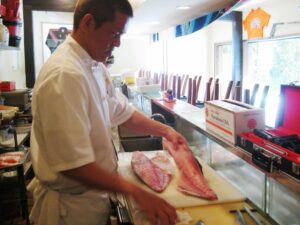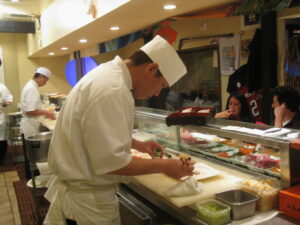
A traditional Japanese sushi menu, as served at a sushi restaurant in Tokyo, looks different.
The Japanese food culture is different than in Denmark.
In Japan, people learn to eat fish from childhood. On a daily basis, the Japanese eat as much fish as we eat meat in Europe. The Japanese eat as much meat as we eat fish.
The Japanese learn to appreciate many different kinds of fish and, it can be seen from the menu when you visit a sushi restaurant in Tokyo.
Typically there will be 20 different kinds of fish. The fish are turned into nigiri sushi. The Japanese love sushi rolls, but when it comes down to it, they prefer fish and rice. Therefore, A Japanese traditional sushi menu will consist of 10-15 nigiri sushi.
However, there will also be sushi rolls to a slightly more limited extent.
Read more about Sushi course for beginners
_
Zoë has lectured and held sushi courses for A. P. Moller – Maersk, Hugo Boss Nordic, Novo Nordisk, Novartis, Velux, Gorrissen Federspiel, Beierholm revision, Elbek & Vejrup and many more.



